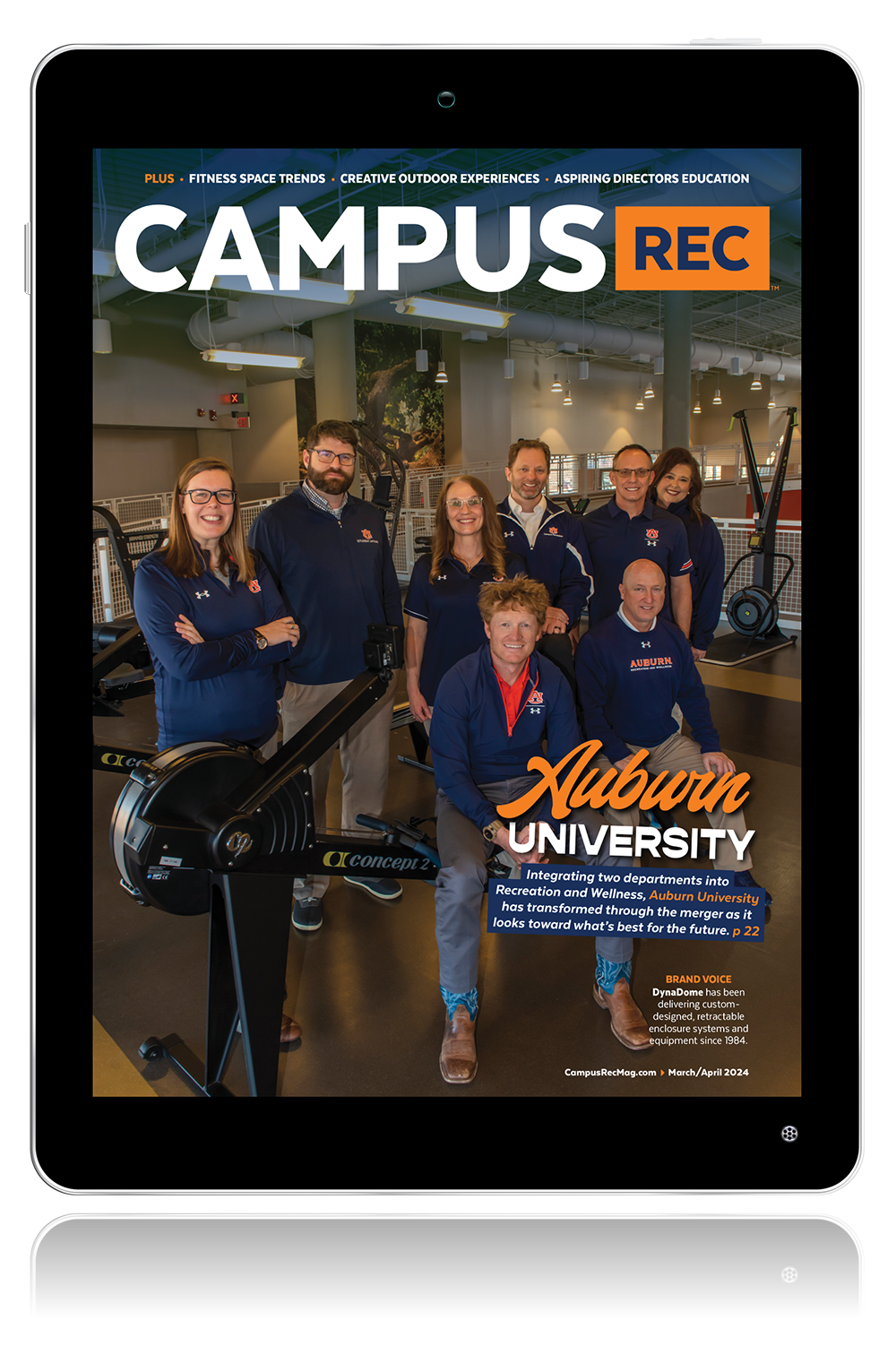Any sports fan knows what it’s like when their favorite team is in a “rebuilding year.” Veteran players leave. Unproven newcomers join. Leadership may completely change course. Fans understand they must pack their patience and get ready for what might be a bumpy season. The hope is with time the team builds a deep bench that puts them in the running for a championship.
Many recreation programs have been going through their own rebuilding years, especially with student teams. The pandemic disrupted the typical knowledge transfer between upperclassmen to underclassmen. Graduation classes departed from our spaces without successors in place leaving younger team members without models to mirror.
Gaps in student leadership have been felt as new employees grapple with how to operate amidst ambiguity. And there’s also the added stress of competing for student employees with rising wages and flexible work arrangements elsewhere.
If you’re a manager of a student team that needs to rebuild, now is the time to focus on building your team’s tacit knowledge and engaging employees in ways that will keep them around.
Tacit Knowledge
First, you might be asking: What’s tacit knowledge?
It’s knowledge built through lived experiences and is subjective in nature. Tacit knowledge can be gained through observation, attitudes, culture and experiences. It’s where the magic happens.
Think about what it takes to manage passionate personalities in an intramural game. A referee with a wealth of tacit knowledge will be able to tap into their past experiences, read player behaviors and assess how to respond. Being able to successfully navigate such a nuanced scenario is why building tacit knowledge is so important.
When student employees can witness these unique experiences and observe the actions of others — in person — they’ll build their tacit knowledge over time.
Establishing rotational job opportunities within your unit can expose students to other areas of knowledge and get them interacting with different leaders. If a rotational program is out of reach, having a philosophy of flexibility to get additional experiences within the recreation environment can encourage student employees to find new ways to build their knowledge banks.
Other Tips
Marie VanBuskirk, the associate director of Operations and Marketing from Oakland University, explained their one-hour “Rec Ride-along” has been a great way for current student employees to shadow their peers working as building managers. It’s even turned into a popular feature on their social media channels and has helped with new employee recruitment. Because of its success, they’re considering opening the “Ride-along” feature for other positions.
Engage Gen Z employees from the get-go. Interview students in pairs or groups in the work environment. Students will get a realistic glimpse into the work, and you’ll get to see how students interact and problem solve together. Once an employee feels established, assign them a small individual project that can aid in their development.
EXTRA CREDIT: Here are some of the best social strategies when marketing to Gen Z.
Recreation centers offer a place for students to find their community, and therefore, stability. Stability can offer much needed mental health benefits and retention of employees. As you rebuild your student team, focus on the basics, as Tom Giles, the Competitive Sports coordinator from Florida International University pointed out.
“Relationships matter,” said Giles. “Show students you care, and they will care about the job and organization. Make time to get to know them and ask what matters most to them in their development. That way, you can help tie the experience to the skills a student wants to get, making for a much more individualized experience.”
There’s no playbook for how to rebuild a student team after a pandemic, but VanBuskirk summed it up perfectly: “One of the best things we can do is be a bright light for students. Realize there’s no new normal and just find the right balance. Remember we offer a safe space for students and a place for them to engage and discover. When I see our professional staff playing basketball with our students, it reminds me how we connect through play and community building. Students feel seen when we invest in them. Great things are still happening.”










